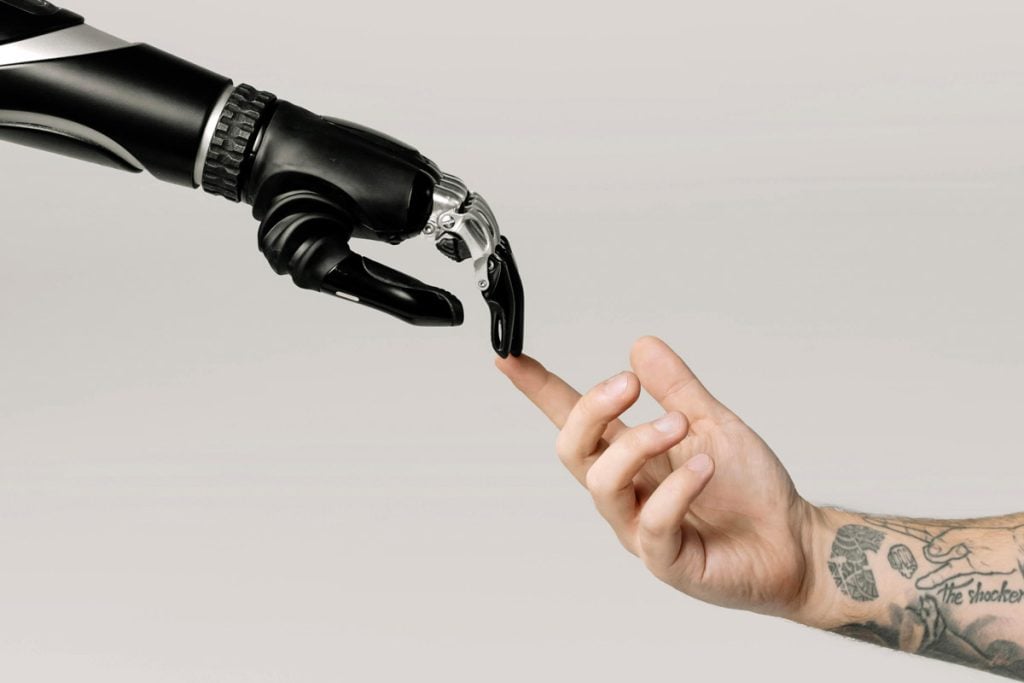What Are Some AI- and Automation-Resistant Side Gigs?

The conversation around AI replacing jobs has shifted from ‘if’ to ‘when’ and ‘how much.’ As we navigate through 2025, more than 76,000 jobs have been eliminated because of AI implementation, with 41% of companies planning further reductions. The gig economy, which exploded over the past decade as millions sought flexibility and additional income, finds itself at the center of this technological transformation.
But not all side gigs are created equal. While for some hustles, automation and AI are inevitable replacements for humans, there are some that are unlikely to be replaced by bots any time soon. And let’s not forget the new side gig opportunities that are emerging because of AI itself.
This article serves as your roadmap for navigating this changing landscape. We’ll explore which side gigs are vulnerable, identify AI-resistant side gigs and uncover new possibilities AI is creating.
Side Gigs Under Siege: The Automation Targets
Understanding which gigs are vulnerable helps us recognize patterns that put certain types of work at risk. The common thread among endangered side hustles is their reliance on predictable patterns, repetitive tasks or limited human interaction requirements.
Make Money Outside of Your AI-Resistant Side Gigs
AI-resistant side gigs mean your need for extra money can be met even as technology advances, but what if there were even more ways you could be scoring some extra income? Try some of our favorite ways to make quick cash.
| Offer | What You Can Earn | What You Have to Do | Take Action |
|---|---|---|---|
| InboxDollars | $225/month | Complete short surveys | |
| FreeCash | $1,000/month | Simple online tasks | |
| GoBranded | Up to $140/month | Share your honest opinion | |
| Kashkick | $1,000/month | Try out apps | |
| Solitaire Cash | Up to $83 per win | Compete against other players | |
| Bingo Cash | Up to $83 per win | Compete against other players |
Gigs Involving Transportation
Transportation and delivery services represent perhaps the most visible example of automation’s advances. Ride-sharing drivers, who became synonymous with the gig economy’s rise, now face an existential threat from autonomous vehicles. Major companies are already testing self-driving car services in urban environments, with some analysts predicting widespread deployment within the next few years.
Similarly, food and package delivery services are experimenting with drones and robots, potentially eliminating the need for human drivers in many scenarios.
Freelance Content Creation
Content creation at scale is another area experiencing significant disruption. While creativity remains a human domain, AI writing tools have become sophisticated enough to handle routine content generation, social media posts, basic articles, product descriptions and even simple marketing copy.
Freelance writers focusing on these types of assignments are finding their services in reduced demand as businesses turn to AI alternatives that work around the clock at a fraction of the cost.
Education, Customer Service and Data Entry
Educational and customer service roles are also feeling the pressure. Private tutoring for factual subjects and standardized test preparation increasingly competes with AI-powered learning platforms that can provide personalized instruction at scale. Customer service representatives face similar challenges as chatbots become more sophisticated and capable of handling complex inquiries without human intervention. Some predictions say 80% of customer service roles will be replaced by AI by 2026.
Data entry clerks have long been recognized as prime candidates for automation. These roles, characterized by repetitive processes and clear rules, offer little protection against AI systems designed to process information faster and more accurately than humans.
The broader context reveals the scope of this transformation. The World Economic Forum estimates that 85 million jobs will be displaced by 2025, with automation particularly impacting routine and predictable work environments.

AI-Resistant Side Gigs
The side gigs that will weather the automation storm share common characteristics: they require emotional intelligence, creativity, physical dexterity, complex problem-solving in unpredictable environments and most importantly, genuine human connection. The most resilient, AI-proof jobs aren’t necessarily the flashiest ones. They’re the ones grounded in critical thinking, problem-solving and human oversight.
Care-Based Gigs
Human-centered care services represent one of the strongest categories of automation-resistant work. Child care and elder care require far more than task completion: they demand empathy, patience, and the ability to provide emotional support and companionship. Health care requires a human touch, whether it’s comforting a patient through a difficult diagnosis or designing personalized treatment.
Pet sitting and dog walking fall into this same category, as pet owners seek trustworthy individuals who genuinely care for their animals’ well-being.
Skilled Trades
Skilled trades and home services offer perhaps the most robust protection against automation. These jobs operate in unpredictable environments, so they will generally see less automation by 2030.
Electricians, carpenters and handymen work in dynamic environments where each job presents unique challenges requiring creative problem solving and manual dexterity. Home services like pressure washing, landscaping and house cleaning similarly require physical presence and adaptability to different environments and client preferences.
Creative and Artistic Professions
Creative and artistic professions thrive on human originality and emotional expression. Artisan crafts and handmade goods derive their value from their human origin. There are slight imperfections and unique touches that mass production cannot replicate. In fact, the demand for handmade goods is predicted to increase by almost 10% each year for the next five years.
In particular, professional photography, like for weddings, portraits and events, requires not just technical skill but the ability to capture emotion, direct subjects and create compelling visual narratives.
Local tour guides provide not just information but storytelling, local insights and the ability to read group dynamics and adjust experiences accordingly.
Coaching, Consulting and High-Ticket Sales
High-touch sales, coaching and consulting leverage interpersonal skills and emotional intelligence. Personal fitness trainers don’t just need exercise knowledge, but also need to provide motivation, accountability and the ability to adapt programs to individual needs.
Life coaches and career counselors guide clients through complex personal transitions that require empathy, active listening and the ability to ask insightful questions that promote self-discovery.
High-ticket sales roles depend on building trust, understanding client needs and navigating complex negotiations that require human judgment and relationship-building skills.
Event Planning
Event planning and coordination involve managing multiple moving parts, handling unexpected challenges, and creating experiences that meet client visions while adapting to real-world constraints.
Content Creators and Influencers
Content creation with personality differs significantly from routine content generation. While AI can produce informative articles, it can’t replicate the unique voice, perspective and personality that drives successful blogs, YouTube channels, podcasts and social media pages. The most successful content creators build communities around their personal brand, creating content that reflects their individual experiences, opinions and style.
Despite the rise of virtual influencers, the fact that so much of these roles depend on human connections between creator and audience means they’re safe for now.
AI-Enabled Opportunities: New Frontiers in Side Hustles
Rather than viewing AI as purely disruptive, forward-thinking individuals are discovering ways to leverage these tools to create new income streams and enhance existing services. The key insight is that AI works best as an augmentative tool rather than a replacement for human creativity and judgment.
AI Consulting
AI consulting has emerged as one of the most lucrative new opportunities. As businesses scramble to understand and implement AI solutions, they need guides who can bridge the gap between technical possibilities and practical applications.
Freelance AI consultants help organizations develop AI strategies, select appropriate tools, and train teams on effective implementation. This field offers significant earning potential, with some specialized projects commanding substantial fees.
AI Training
AI content review and training represents another growing niche. Companies developing AI systems need human experts to fact-check AI-generated content, provide feedback on quality and accuracy, and help train AI models to produce better results. This work requires subject matter expertise combined with the ability to evaluate and improve AI outputs.

Your Roadmap to AI-Resistant Side Gigs
Using AI-resistant side gigs requires intentional planning and continuous adaptation. The most important step is embracing lifelong learning, particularly in understanding how AI tools can enhance your existing skills rather than replace them.
Strategic skill development should focus on capabilities that complement rather than compete with AI. Careers that require creativity, emotional intelligence, leadership and complex decision making become increasingly valuable as routine tasks become automated. Jobs safest from AI and automation are ones that require human qualities that a robot cannot replicate, such as social skills, emotional intelligence and interpersonal relationships.
Network building and personal branding become crucial differentiators in an automated world. Algorithms can’t replicate strong professional relationships and a distinctive personal brand. Focus on building genuine connections within your industry and developing a reputation for quality, reliability and unique value that goes beyond what AI can provide.
Diversification and adaptability protect you against disruption in any single income stream. Rather than relying on one type of gig, develop multiple revenue sources that leverage different skill sets and serve different markets. This approach provides financial stability while creating opportunities to experiment with new AI-enabled services.
Choosing your focus requires aligning passion with market opportunity as new roles emerge. Select side hustles that genuinely interest you, as sustained effort after a full-time job requires intrinsic motivation. Assess the financial viability of potential opportunities and ensure they fit your schedule and lifestyle constraints. Look for business models that can be broken into manageable tasks and have potential for growth or passive income generation.
Thriving in the AI Era
The future of side hustles isn’t about competing with AI. It’s about understanding where human value remains irreplaceable and how technology can amplify our unique strengths. The winners in this new landscape will be those who embrace AI as a powerful tool while doubling down on distinctly human capabilities.
They’ll build businesses around empathy, creativity, personal connection and the kind of nuanced problem-solving that only comes from human experience and intuition. By focusing on these enduring human strengths while strategically leveraging AI to enhance efficiency and capabilities, you can build side hustles that not only survive the automation wave but thrive because of the unique value you bring to an increasingly digital world.
New York contributor Kiara Taylor specializes in financial literacy and financial technology subjects. She is a corporate financial analyst who also leads a group affiliated with University of Cincinnati that teaches financial literacy to Black students and helps them secure employment and internships.












